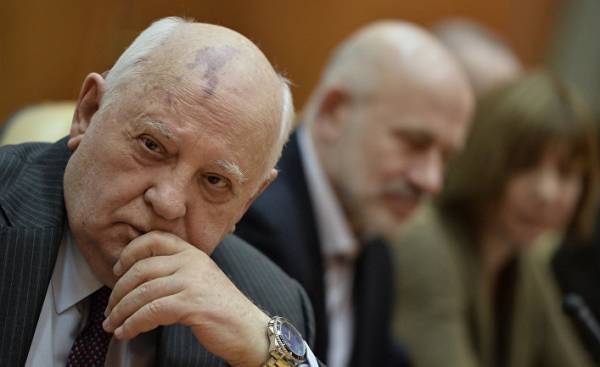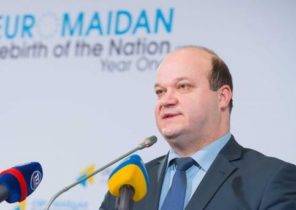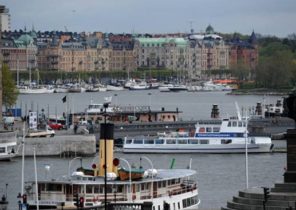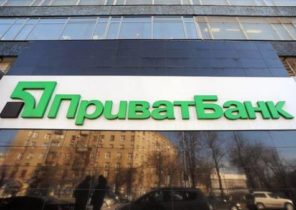
A few weeks ago Mikhail Gorbachev, the last leader of the Soviet Union and the man who more than anyone made to end of the cold war, said the German newspaper Bild that in the modern world all the signs of a new cold war — there. Gorbachev believes that the USA “has dragged” Russia into this war, trying to “sell their General idea of triumphalist”.
But whether the current antagonism between the US and Russia something really “new”? And how justified attempts to lay the blame on the US, as it tends to make Gorbachev — and, of course, the Kremlin. To answer these questions we must turn to history, starting well before the Fulton speech of Winston Churchill about the iron curtain, delivered in 1946.
In reality, the relationship of confrontation between Russia and the West began over a hundred years before the cold war. In 1820-ies Russia acted as not only the main winner of the Napoleonic wars, but also the most conservative (or rather reactionary) forces in Europe. Under the tsars Alexander I and Nicholas I it was ready to repay any signs of a new “revolutionary contagion” in the continental monarchies.
By 1830 the schism between the countries of the Holy Alliance (Russia, Prussia and Austria) and the rest of Europe was already deep. And when Russia crushed a two “color” revolutions (the Polish uprising of 1830-1831 and the Hungarian revolution of 1848-1849), he became even deeper. Both interventions caused a massive surge in anti-Russian sentiment throughout the continent.
To strengthen the position of Russia, Nicholas I drew their attention to the Orthodox population of the Balkans and the Ottoman Empire: its marine Minister, Alexander Menshikov, required in 1853, Russia was recognized as the official patron of the 12 million Orthodox citizens of the Ottoman Empire. When this demand was rejected, the Russian troops occupied is under the control of Ottoman Moldavia and Wallachia. This step then led to the Crimean war, which Russia shamefully lost in 1856. In my opinion, this defeat marked the end of the first cold war between Russia and Europe that lasted for about 30 years.
Most people call a cold war confrontation that began almost a century later, when the Soviet Union trying to expand its sphere of influence after the Second world war, established the Communist regimes from Poland to Bulgaria. In 1946, the USSR began to destabilize Greece and the Council of foreign Ministers, established in accordance with the Potsdam agreement of 1945, the Kremlin has demanded the transfer of control over Tripolitania in North Africa. It is a requirement of the Western leaders rejected. The following year, the Soviet Union did not let its satellite countries to take part in the Marshall Plan, whose goal was the economic recovery of Europe after the war. In the future, Joseph Stalin established a blockade of West Berlin, tried unsuccessfully to get him to comply with this decision.
The cold war put the USSR and the USA on the brink of war over Korea in the 1950s and Cuba in 1962. But, as in the nineteenth century, the confrontation revolved around control of Europe, for example of steel of Soviet intervention in Hungary in 1956 and Czechoslovakia in 1968.
The cold war began to tilt to the Exodus in the late 1980s, when the Soviet Union lost the “limited” peripheral war, largely similar to Crimean war of the 1850s. the War in Afghanistan in 1980-e years finally exhausted military and economic potential of the USSR: he was forced to leave their satellite countries in Europe and then collapsed.
This cold war has much in common with the two previous confrontations. First of all, just as the 1820s, and in the late 1940s, an aggressive Russia denies Western values and acts against the United States. Although no one is threatening to attack Russia, anti-Western hysteria was once used to divert attention from domestic economic problems and to consolidate the support of the leader of the country.
Russia President Vladimir Putin, as in the times of Nicholas I, proclaimed himself defender of the Orthodox faith and the “Russian world” (by analogy with “the Slavic world” of the nineteenth century). Such statements provide the Kremlin a ready justification for the policy of destabilization of neighbouring countries (Ukraine) and support of separatist movements (from Moldova to Georgia), as well as for open calls for suppression of “color” revolutions in neighboring countries.
All this allows to make a critical observation about the current cold war — West one it is not “draws”. In fact, in all three confrontations, since the XIX century, it was the Russian initiative, motivated by its internal problems. And it pushed Europe or the West to strategic deterrence. Today, the West responds to Russia’s annexation of Crimea and occupation of Donbas in Eastern Ukraine in the same way as the annexation of Walachia in 1853, and the blockade of West Berlin in 1948.
It should be noted that in all the three confrontations the West side consisted of several “natural allies”, while Russia acted either alone or together with minor country satellites. In all three cases, the leaders of the country showed a readiness to blame others in domestic difficulties, to scare all his potential allies and supporters, waste of human and economic resources. Based on these lessons of history, it seems likely that Russia’s attempt to deter an imaginary foe will only lead to economic collapse and political chaos, forcing the country’s elite to abandon geopolitical ambitions and to turn to the urgent domestic issues.
In this sense, the President of the United States Donald trump, perhaps partly right when he says that “the time will come when everyone will come to their senses”. But the second part of his statement — that “there will come lasting peace”, — ignores the whole history of Russian relations with the West. Sooner or later the cycle will start again.







